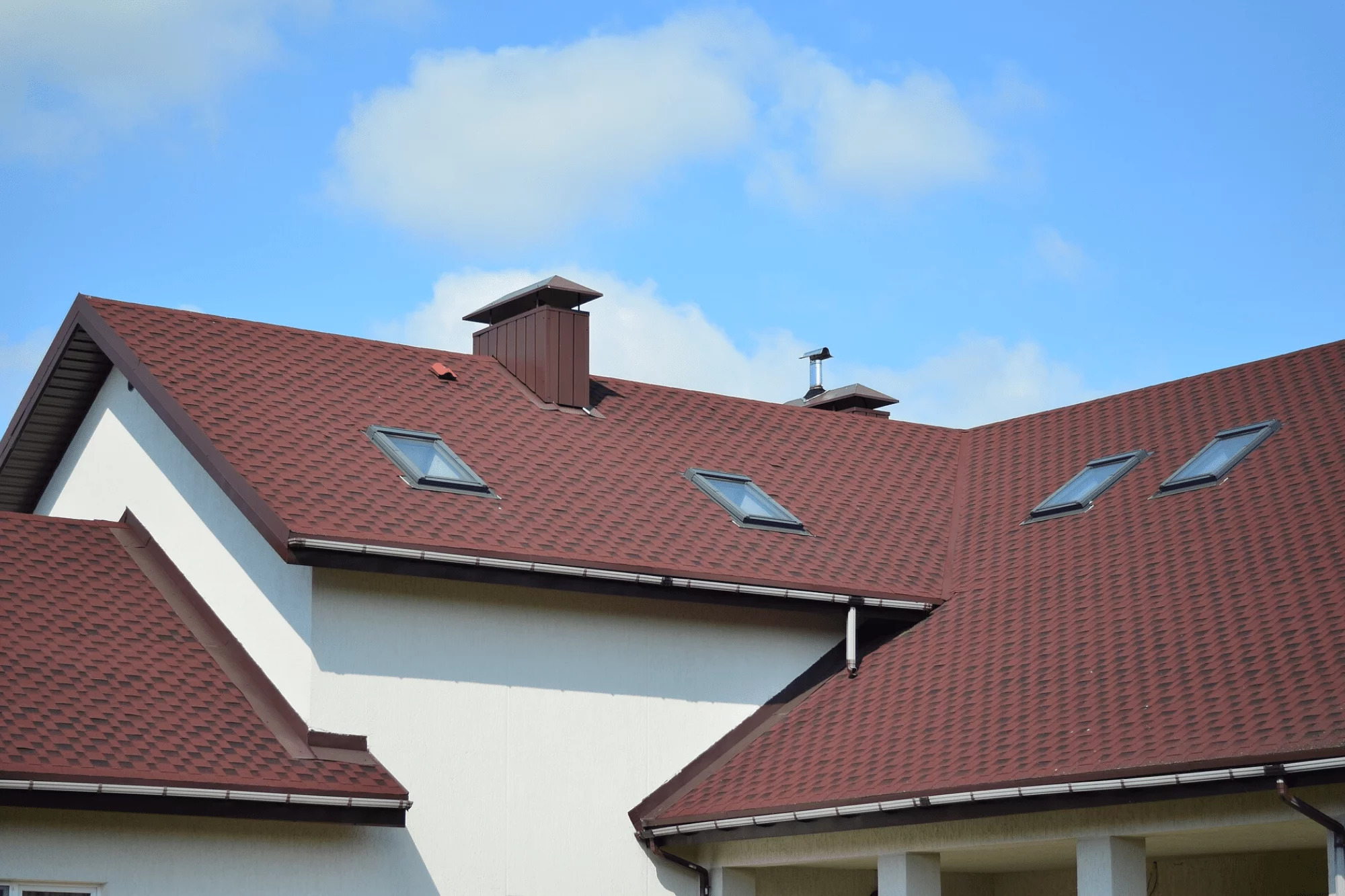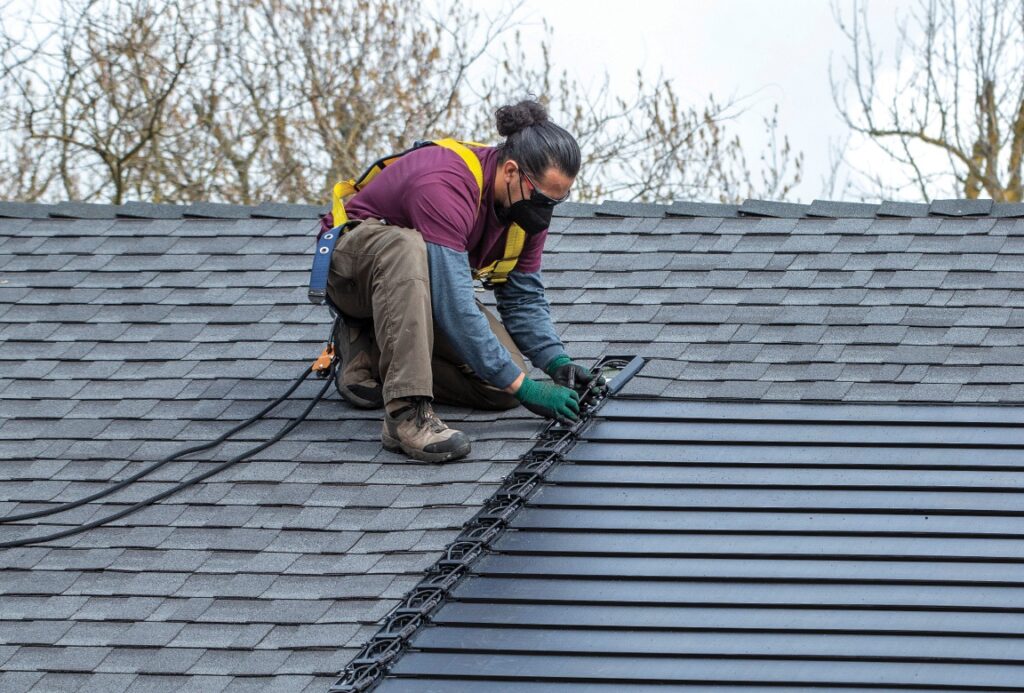Why Get An Energy-Efficient Roof?
You may have noticed that attics and top floors are always very hot in the summer. At times, the temperatures can get so hot that they remind you of a sauna. The heat makes it uncomfortable for anyone who goes into these areas, and it can also raise your electric bill.
As the temperature goes up, the air conditioner has to work harder to maintain a comfortable environment. That equals more running time for your air conditioner and much more electricity usage. Proper ventilation can help with this problem, but the most comprehensive solution is to install an energy-efficient roof.
The Benefits of Energy Efficiency in Roofing
Energy-efficient roofs offer several compelling benefits:
- Cost Savings: By reducing the reliance on heating and cooling systems, energy-efficient roofs can lead to significant savings on energy bills over time.
- Environmental Sustainability: Lower energy consumption means reduced greenhouse gas emissions, contributing to a cleaner and more sustainable environment.
- Enhanced Comfort: Well-insulated roofs maintain a consistent indoor temperature, providing greater comfort throughout the year.
- Increased Home Value: Energy-efficient features, including roofs, can enhance the value of a home and attract environmentally conscious buyers.
How Does An Energy-Efficient Roof Work?
The most important quality of an energy-efficient roof is its ability to reflect heat. This ability keeps your home from absorbing heat and allows your air conditioner to run with less strain.
There are several ways to make a roof reflect heat. For one, you can use special reflective paint on your roofing material. You can also use a reflective sheet applied underneath the shingles. Sometimes, the shingles themselves are made with heat-reflective surfaces. Such shingles will usually be marked with the “Energy Star” logo and should thus be easy to identify.
In winter, you will have the opposite problem. Because all of your home’s warm air will tend to collect in the attic, the heater will have to warm the attic before it can warm the rest of the house. Anyone who has used a kerosene heater can tell you about this effect, as it is particularly apparent when using that kind of heater. The home will be warmed from the top down, but that can be a problem if your roof isn’t well-insulated.
The obvious answer is that you need insulation at the top of your home, preferably the kind of insulation that can reflect heat. Instead of reflecting it toward the outside, this will reflect it downward, which is (presumably) where you want it to be. Without this, the roof and its surrounding timbers will tend to absorb heat from the warmer air around them. Eventually, this heat is conducted to the outside, where it is wasted and lost.
Energy-Efficient Roof Materials
The most critical choice you will make when choosing a new energy-efficient roof will be your choice of material. There are quite a few roofing materials available, but your best options will probably be one of the following:
- Ceramic
- Asphalt
- Metal
- Slate
We chose to omit wood shakes because they are not quite as energy-efficient as the others. Also, they have to be treated in specific ways to resist water rot, and that makes them more expensive.
Asphalt shingles are the standard option. If you get the standard shingles, they will offer no special heat-reflective properties, so make sure that your asphalt shingles are made in the right way. Asphalt is very cheap, but it isn’t the most durable option. It tends to be easily damaged by high winds, and it can quickly grow mold and algae.
Ceramic shingles are also quite popular. They are made of fired clay, and clay is everywhere, so they aren’t particularly expensive. They look very nice, and they resist wind damage very well because of their greater weight. They aren’t very resistant to impact breakage, but they are completely fireproof and provide excellent insulation. Of course, they are one of the heavier roofing materials as well. Slate tiles and other stone roof tiles will have similar properties.
For those who want to reflect heat, the use of metal is a natural choice. Tin, aluminum, and steel are naturally shiny surfaces and can reflect sunlight and heat with great efficiency. Metal roofing also offers fire resistance with a lot less weight. Metal roofing can get expensive but is very long-lived.
Does The Color Of The Roof Make A Difference?
Everyone knows that darker colors tend to absorb more heat, which is why fewer people wear black in the summertime. It naturally follows that the color of your roof will make some difference. A lighter-colored roof will absorb less heat, but that doesn’t always make it the right choice. For colder climates, you might want a roof that can absorb a small amount of heat. But, how much of a difference will it make?
This study might be of interest. Scientists studied the ability of pigeon feathers to absorb and retain heat, using both black and white pigeons as test subjects. As expected, the darker-colored birds retained heat much more efficiently than the lighter-colored birds. However, this difference became much less pronounced as the wind speed increased.
What Is The Most Energy-Efficient Roof?
That title would have to be awarded to the solar shingle. These are roof shingles that double as small solar panels. While they don’t produce quite as much energy as a solar panel, they do produce energy nevertheless. Because these kinds of roofs will provide power, there is no doubt that they are the most energy-efficient choice.
Of course, these kinds of shingles are not particularly cheap. Several manufacturers offer solar shingles, but bear this in mind: If you are going to use solar shingles, you will also need some batteries in which to store the collected energy.
GAF Solar Shingles: Powering Your Home with Renewable Energy
GAF Solar Shingles are an innovative roofing solution that combines the functionality of traditional asphalt shingles with the power of solar energy. These shingles are designed to seamlessly integrate into your roof, providing a clean and aesthetically pleasing look. With GAF Solar Shingles, you can generate electricity from the sun’s rays, reducing your reliance on traditional energy sources and potentially even earning credits through net metering programs.
Installation and Integration of GAF Solar Shingles
The installation and integration of GAF Solar Shingles require the expertise of roofing professionals like RGB Construction. The process involves careful planning, assessment of roof suitability, and proper placement of the solar shingles. RGB Construction’s experienced team ensures a seamless installation that maximizes energy generation and maintains the structural integrity of your roof.
How GAF Solar Shingles Enhance Energy Efficiency
GAF Solar Shingles contribute to overall energy efficiency in several ways:
- Solar Energy Generation: By harnessing the power of the sun, GAF Solar Shingles generate electricity that can be used to power your home’s appliances, lighting, and other electrical devices.
- Reduced Energy Consumption: The electricity produced by GAF Solar Shingles offsets the energy drawn from the grid, reducing your reliance on traditional energy sources and lowering your energy bills.
- Net Metering Benefits: In regions with net metering programs, excess electricity generated by your GAF Solar Shingles can be fed back into the grid, potentially earning you credits and further reducing your energy costs.
- Environmental Impact: By utilizing renewable solar energy, GAF Solar Shingles help reduce greenhouse gas emissions and promote a cleaner, more sustainable environment.
Frequently Asked Questions (FAQs)
1. How do GAF Solar Shingles work?
GAF Solar Shingles work by converting sunlight into electricity through integrated photovoltaic (PV) cells. These cells absorb solar energy and generate direct current (DC), which is then converted into usable alternating current (AC) electricity for your home.
2. Are GAF Solar Shingles durable?
Yes, GAF Solar Shingles are designed to be durable and weather-resistant. They undergo rigorous testing to ensure they can withstand various weather conditions, including wind, rain, and hail.
3. Can GAF Solar Shingles be installed on any roof?
GAF Solar Shingles can be installed on many types of roofs, including sloped and low-slope roofs. However, the suitability may vary depending on factors such as roof orientation, shading, and structural considerations. Consult with RGB Construction to determine if GAF Solar Shingles are a viable option for your roof.
4. How long do GAF Solar Shingles last?
GAF Solar Shingles come with warranties ranging from 25 to 30 years, indicating their durability and long lifespan. With proper installation and regular maintenance, they can provide reliable solar energy generation for decades.
5. Are there any incentives or rebates available for installing GAF Solar Shingles?
Depending on your location, there may be various incentives, rebates, or tax credits available for installing solar energy systems, including GAF Solar Shingles. Check with local government programs or consult with RGB Construction to explore potential financial benefits.
6. Can GAF Solar Shingles be integrated with existing solar panels?
Yes, GAF Solar Shingles can be integrated with existing solar panels, allowing for a combined solar energy system. RGB Construction can assess your specific setup and provide guidance on the integration process.
Conclusion
Energy-efficient roofs offer numerous advantages for homeowners, ranging from cost savings to environmental sustainability. With the introduction of GAF Solar Shingles, RGB Construction enables homeowners to embrace energy efficiency while harnessing the power of solar energy. By choosing GAF Solar Shingles, you can contribute to a greener future and enjoy the benefits of renewable energy. Contact RGB Construction today to explore how GAF Solar Shingles can transform your roof into an energy-efficient powerhouse.









